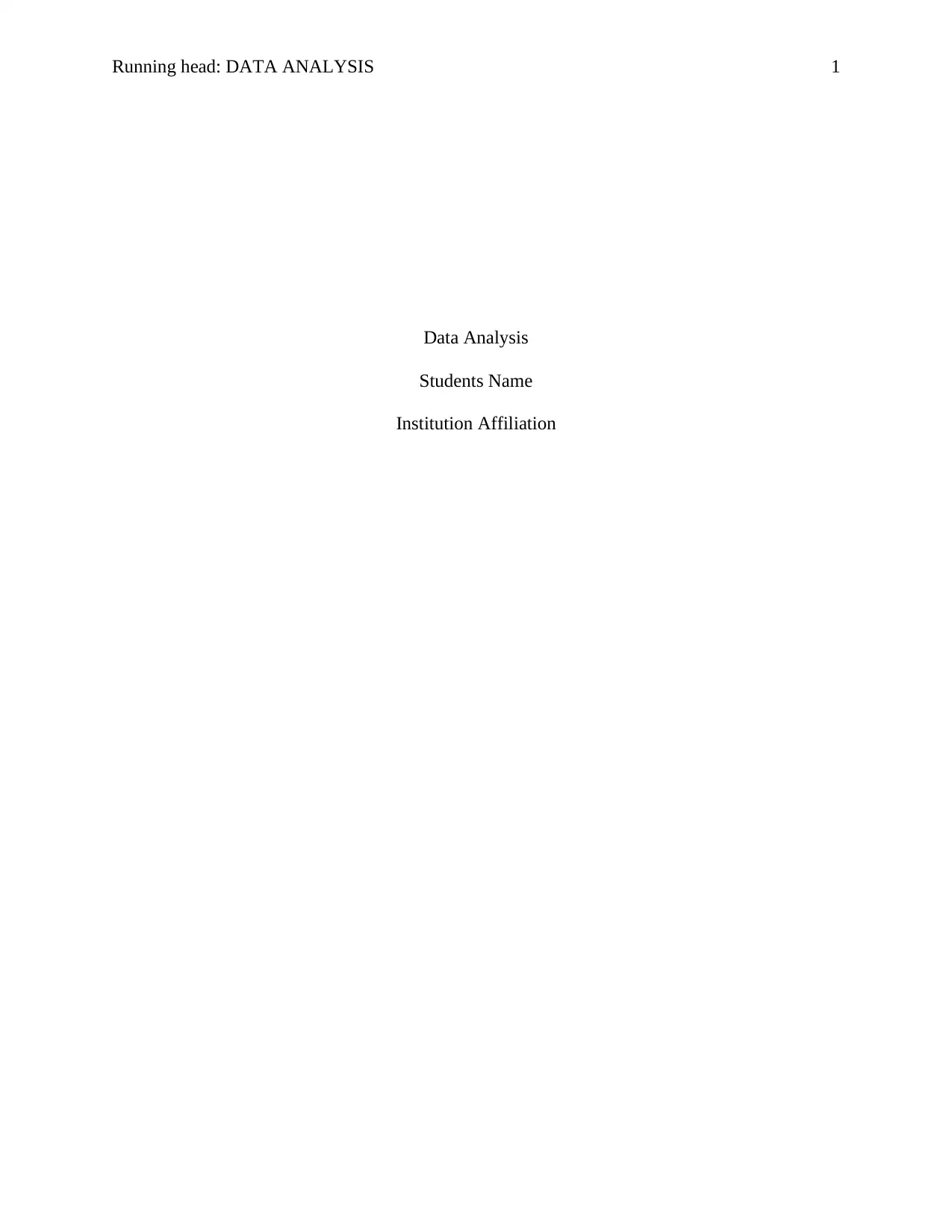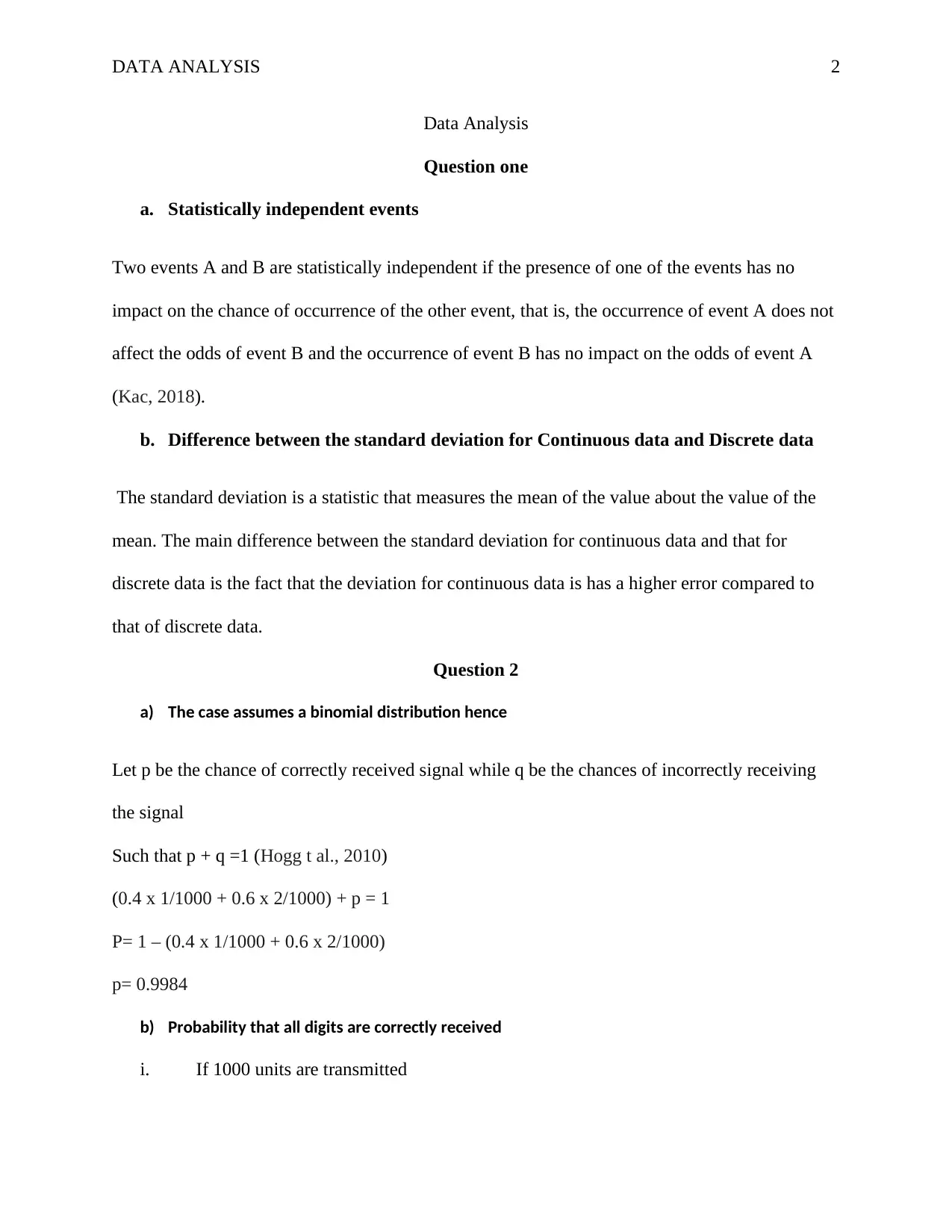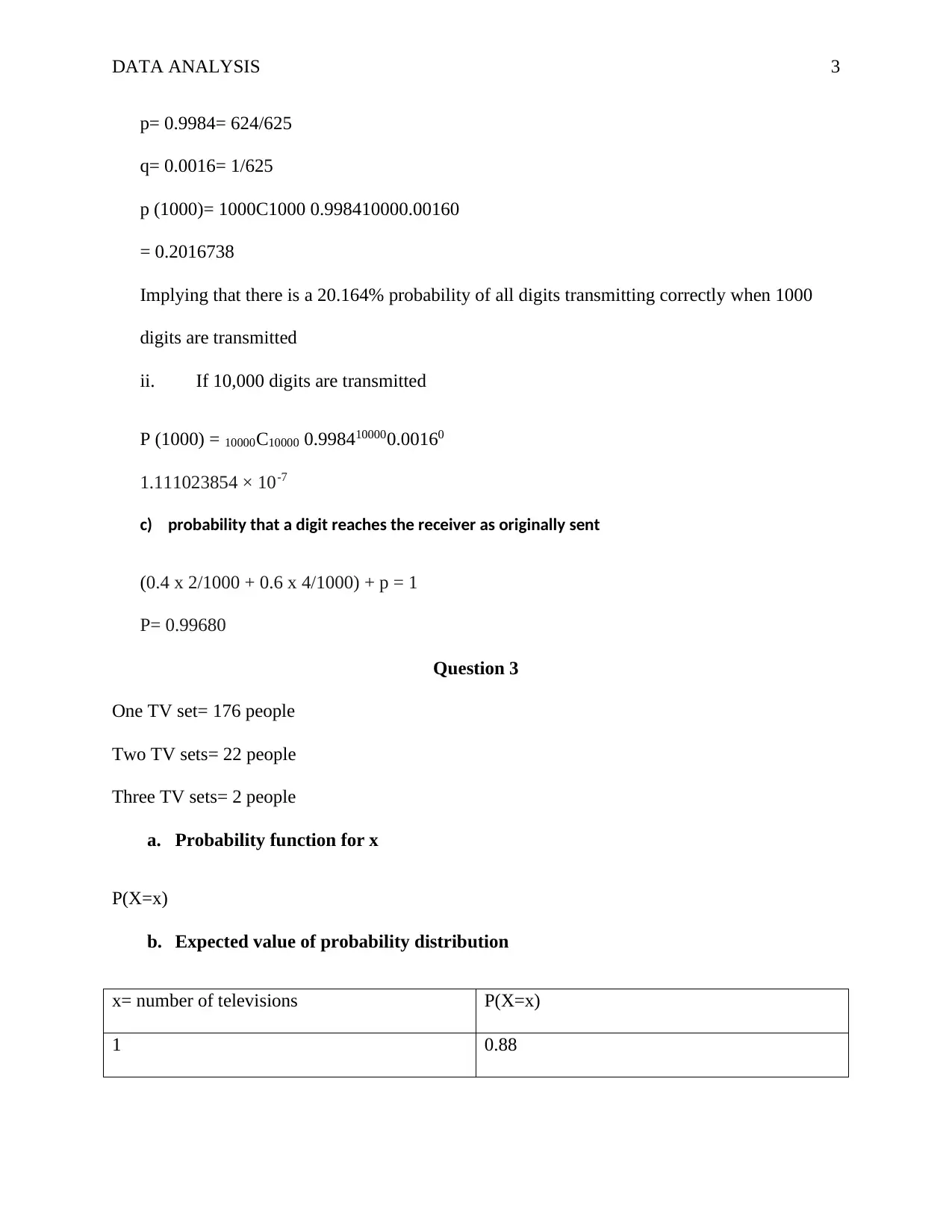Statistics and Probability: Data Analysis Assignment
VerifiedAdded on 2022/09/13
|5
|534
|15
Homework Assignment
AI Summary
This document provides a complete solution to a data analysis assignment, addressing key concepts in probability and statistics. The assignment includes questions on statistical independence, the difference between standard deviations for continuous and discrete data, and the application of the binomial distribution to digital data transmission. The solution details the probability of correctly receiving transmitted digits, calculates probabilities for large datasets, and analyzes the probability function, expected value, variance, and standard deviation for a given scenario. The document provides step-by-step workings and explanations, making it a valuable resource for students studying statistics and data analysis.
1 out of 5






![[object Object]](/_next/static/media/star-bottom.7253800d.svg)